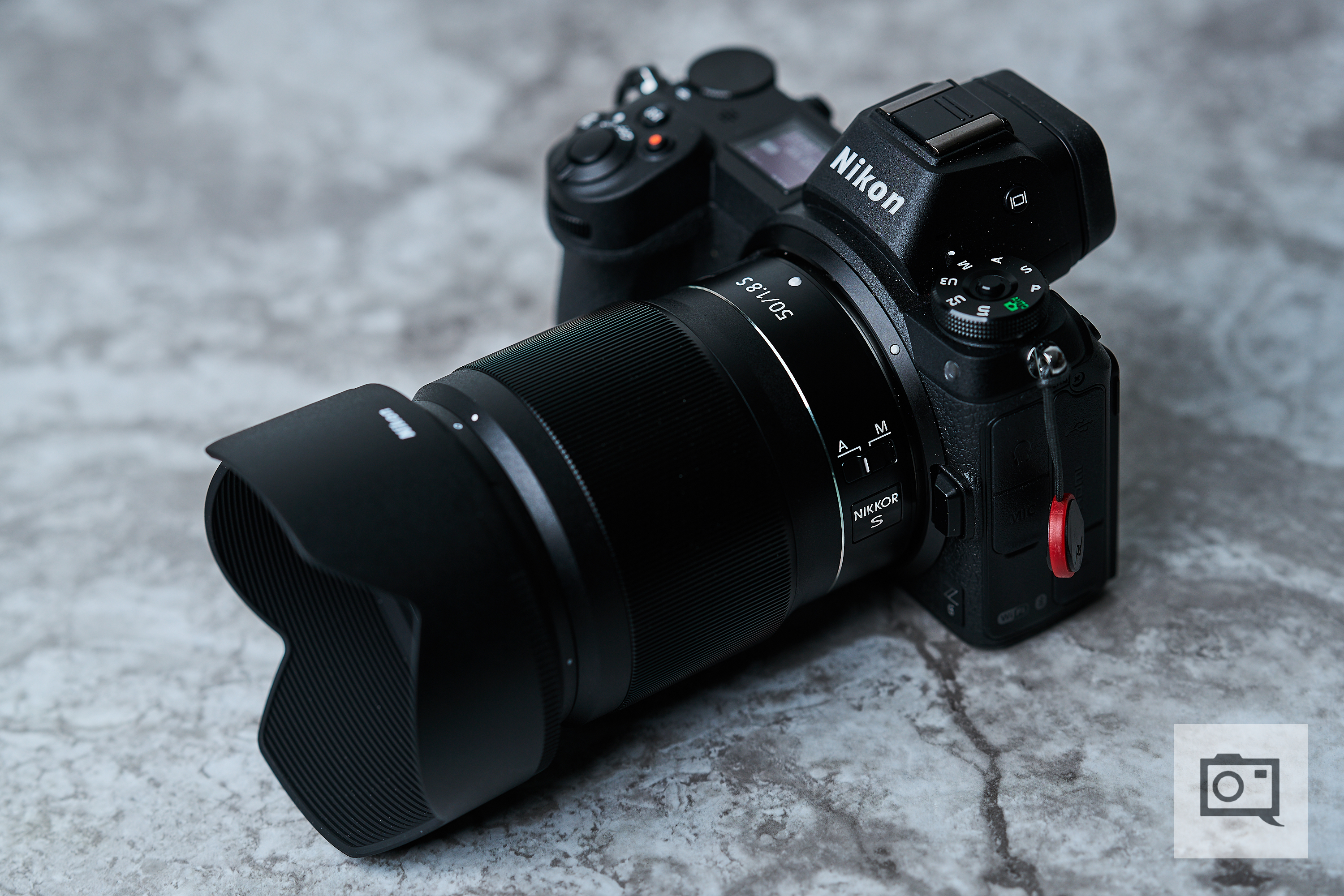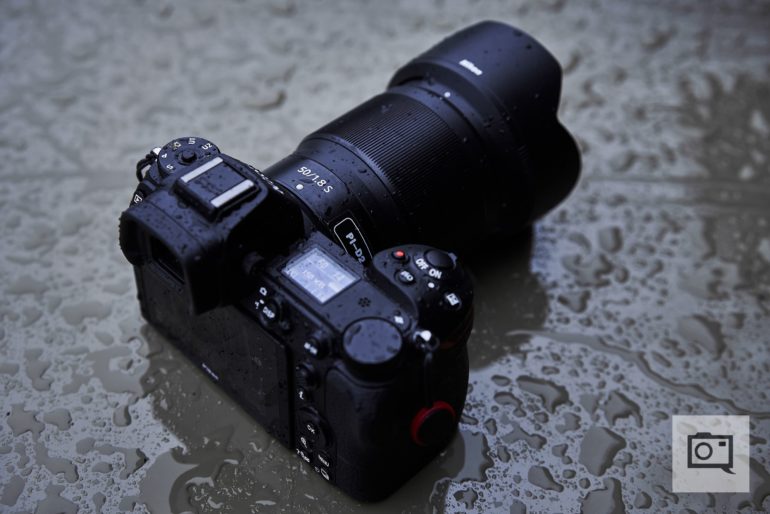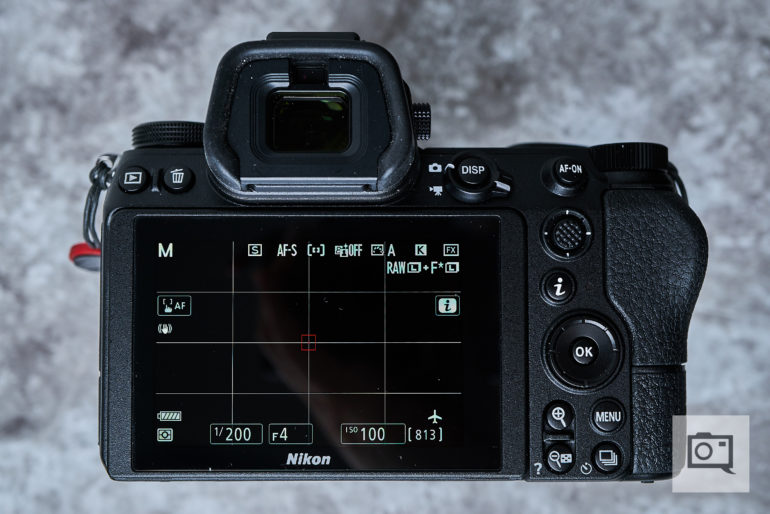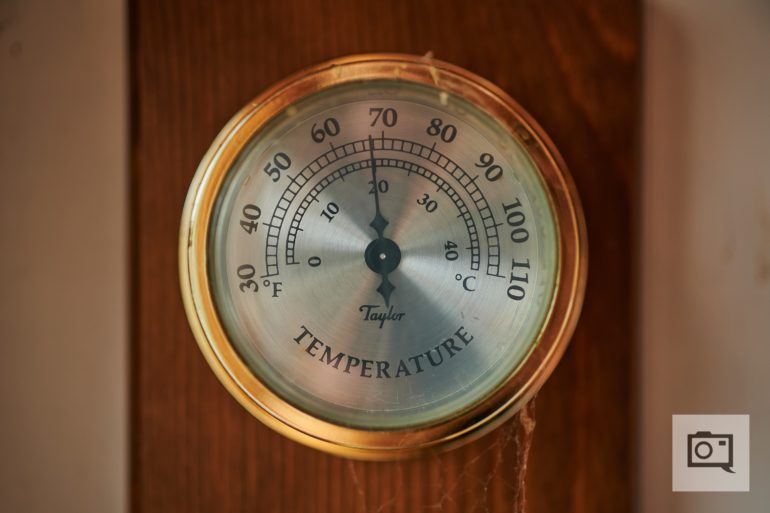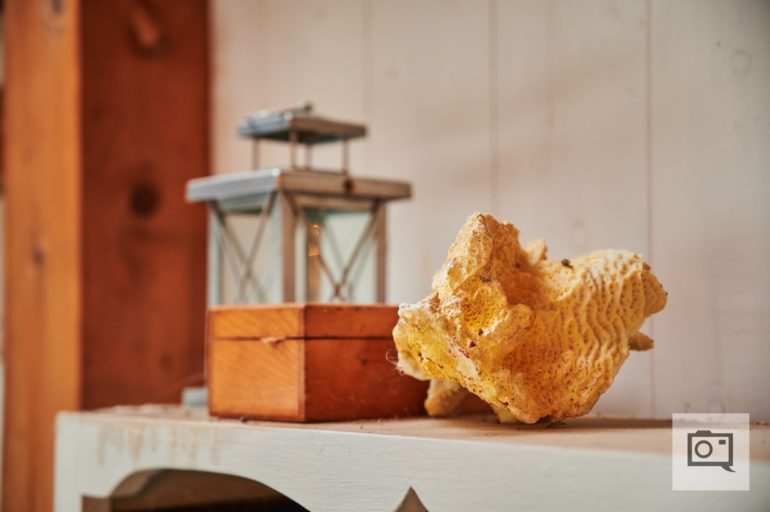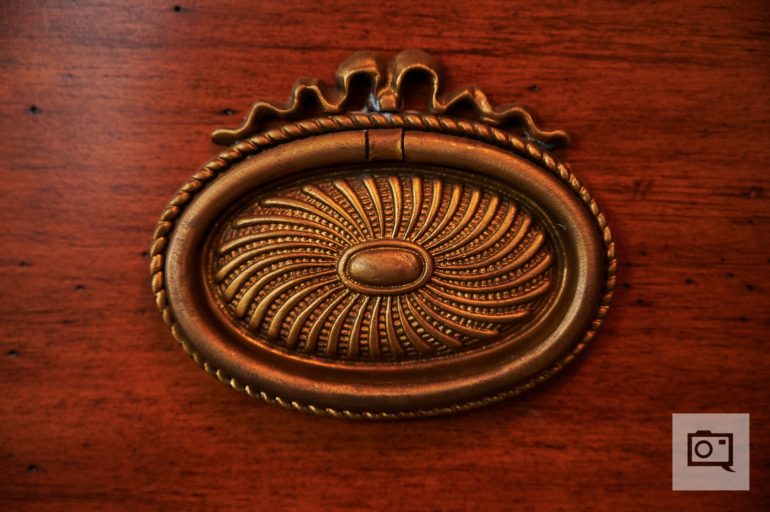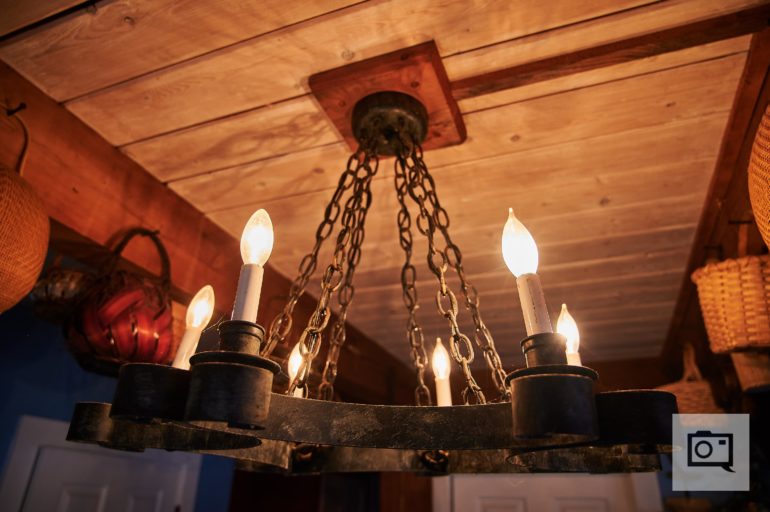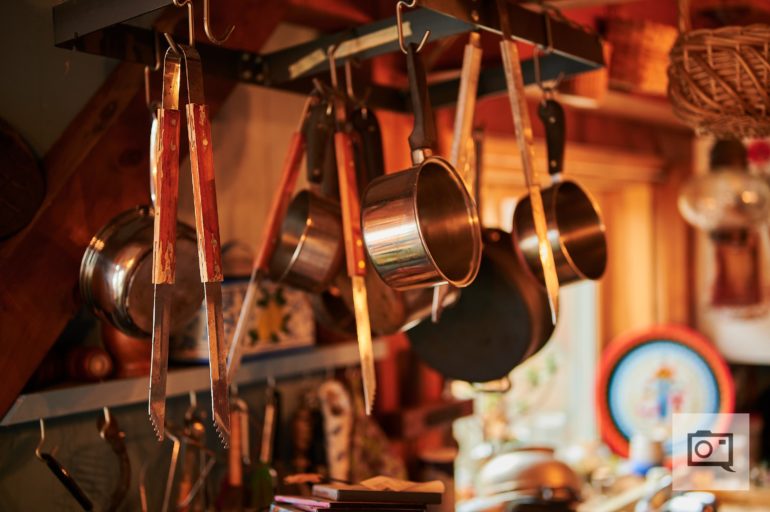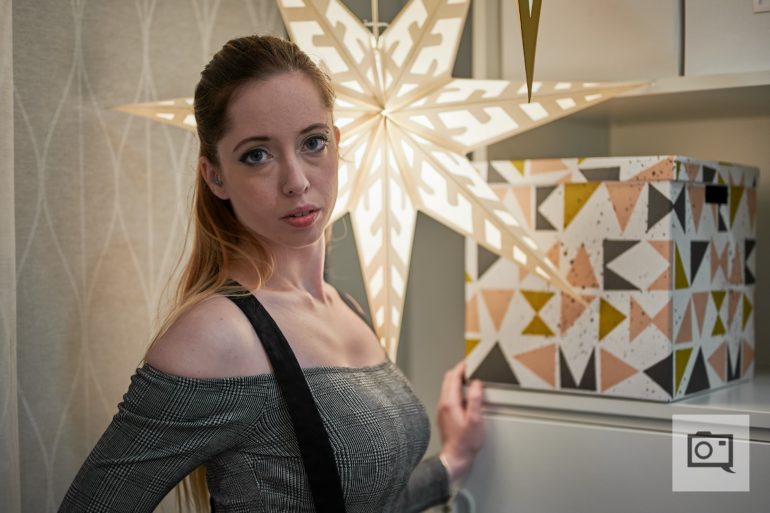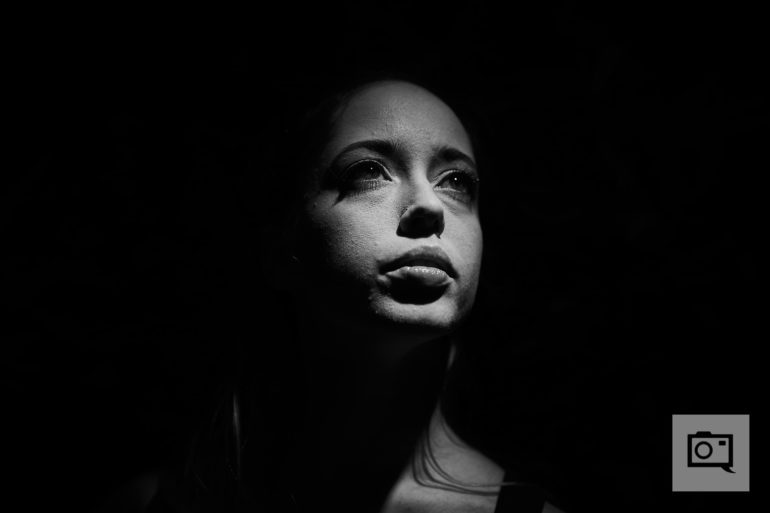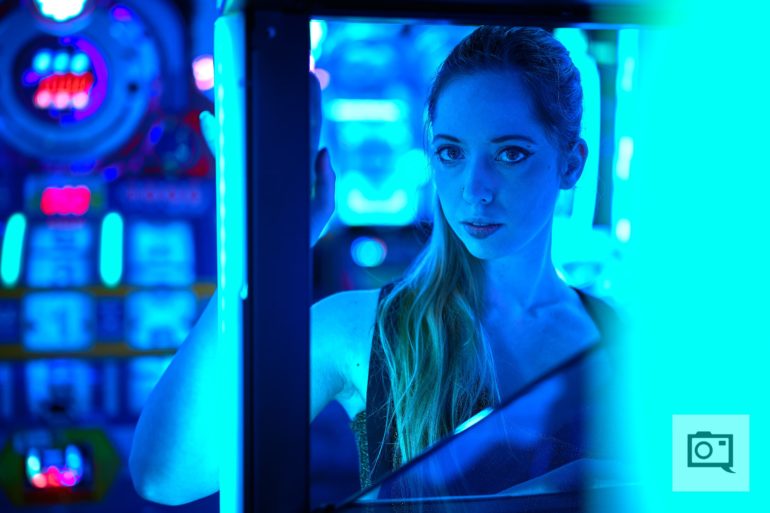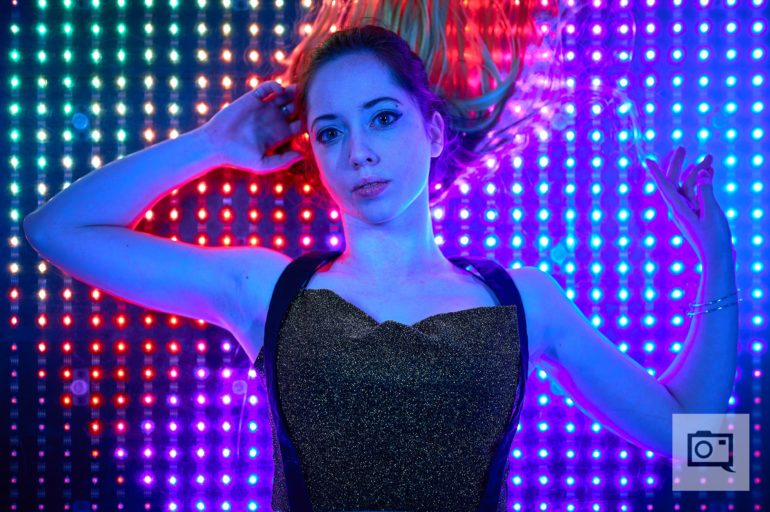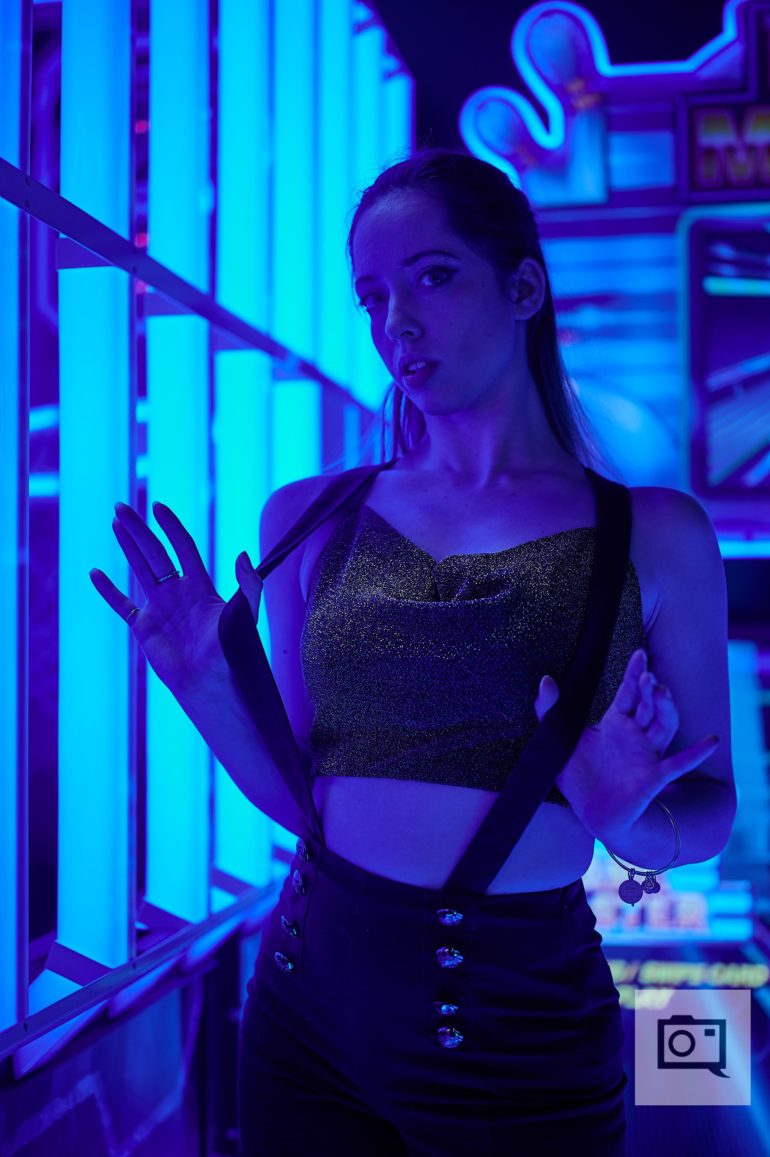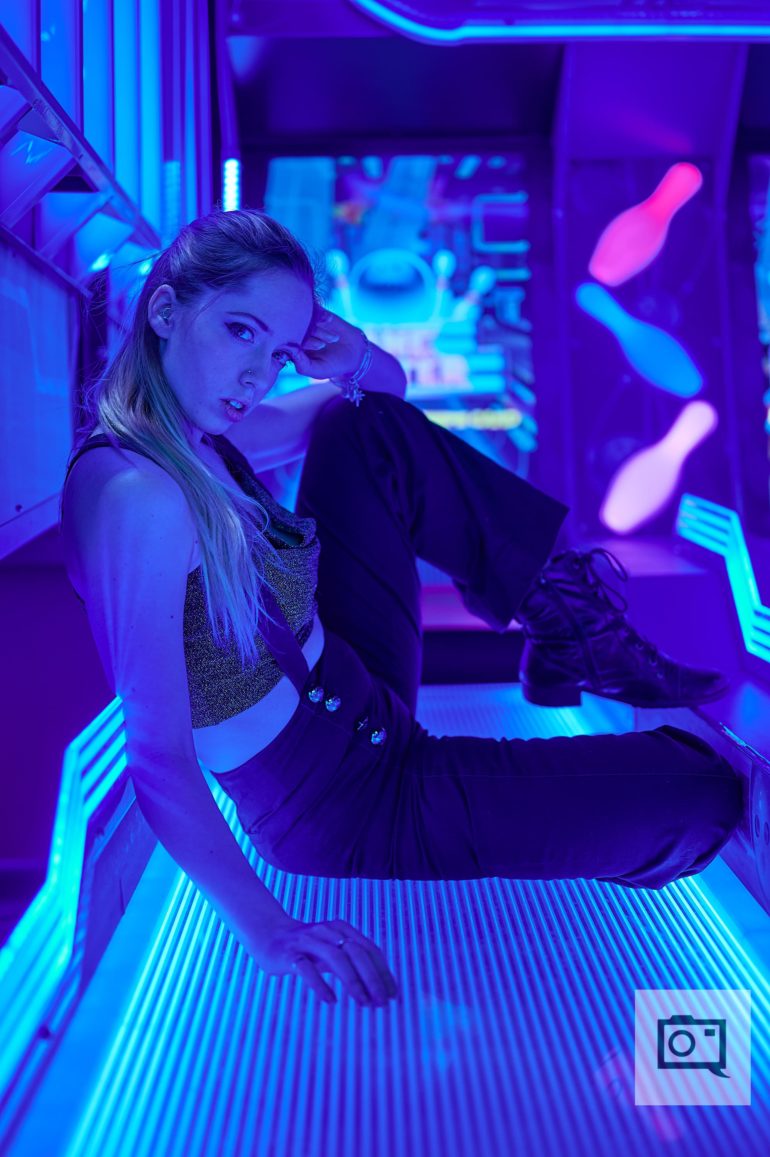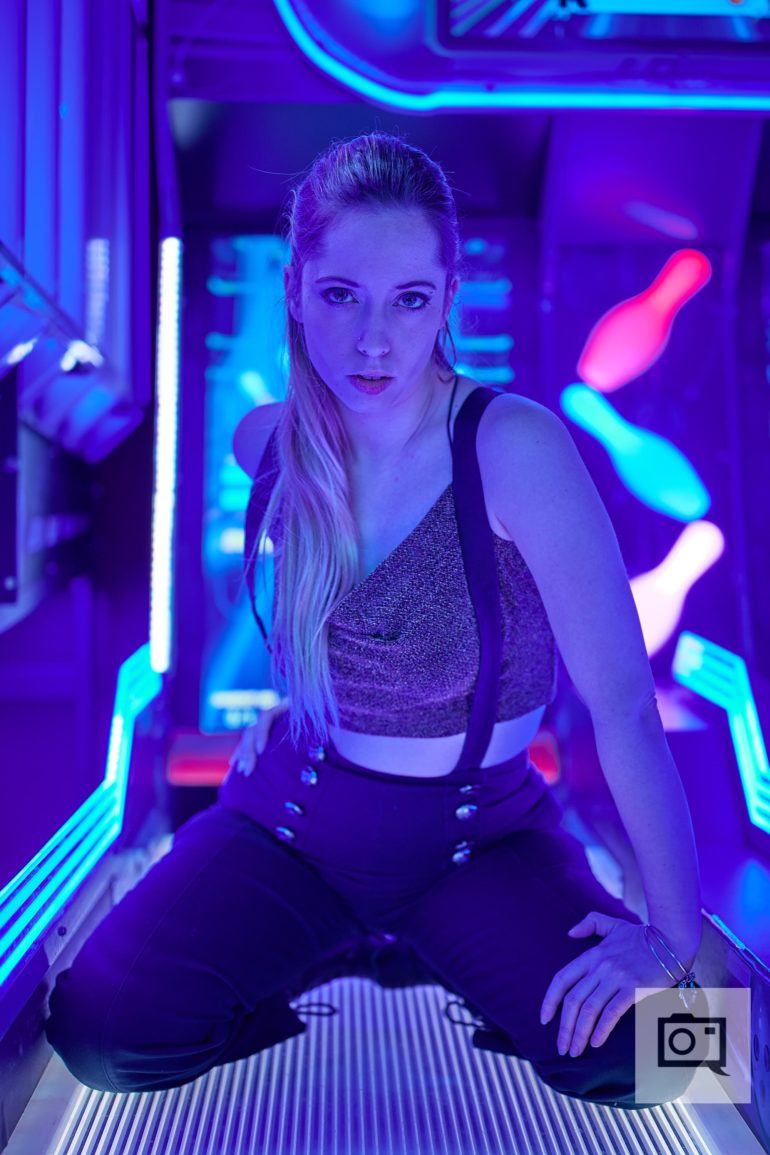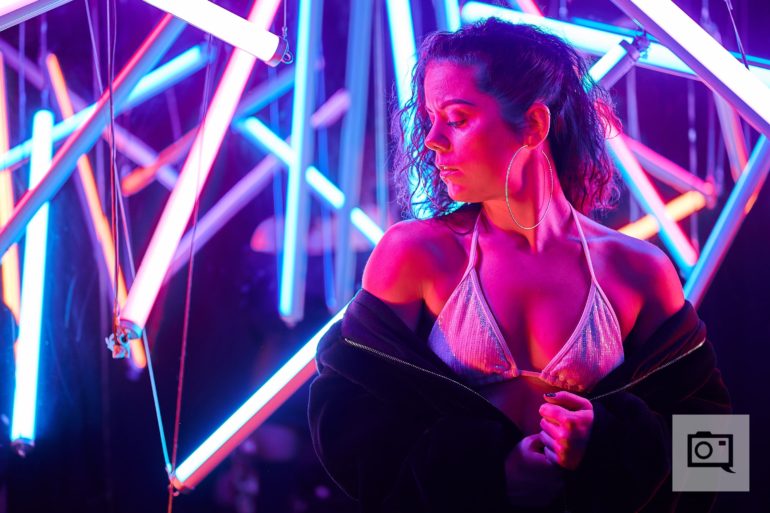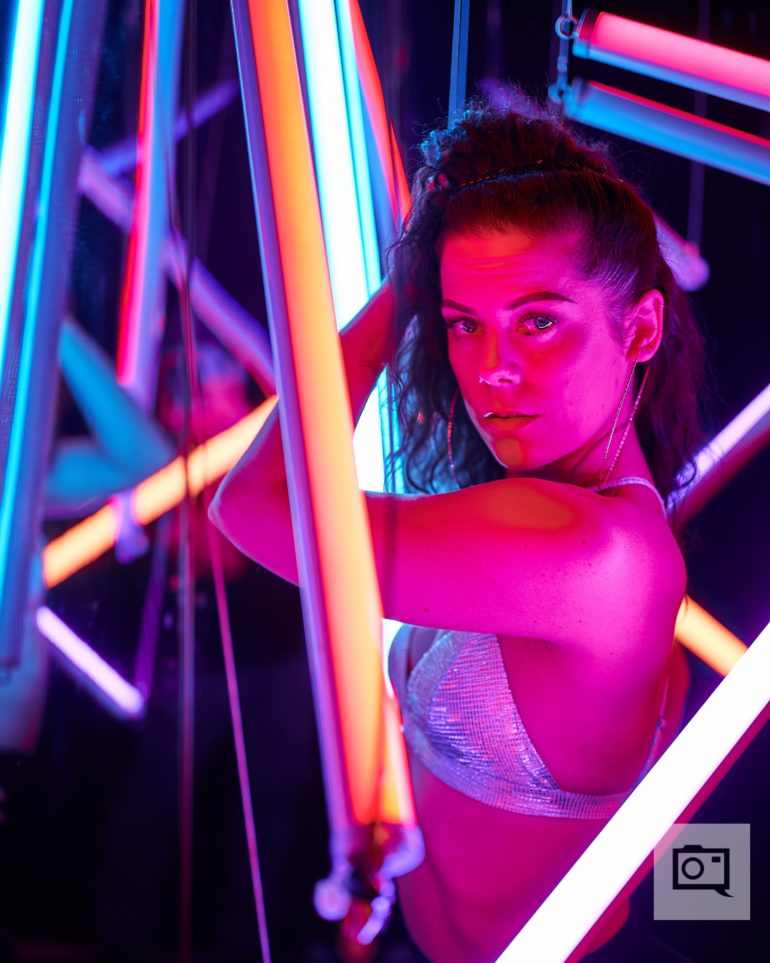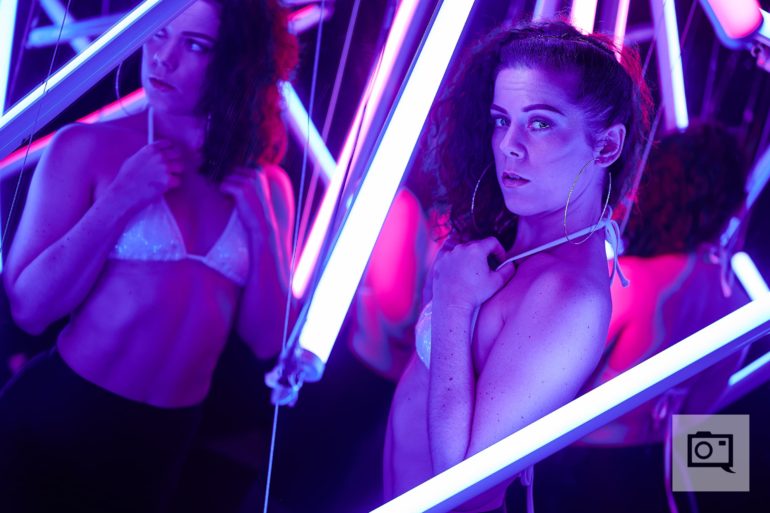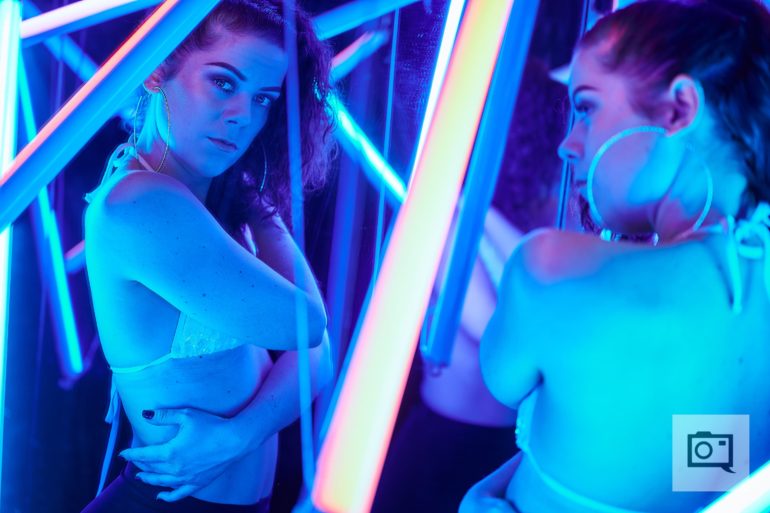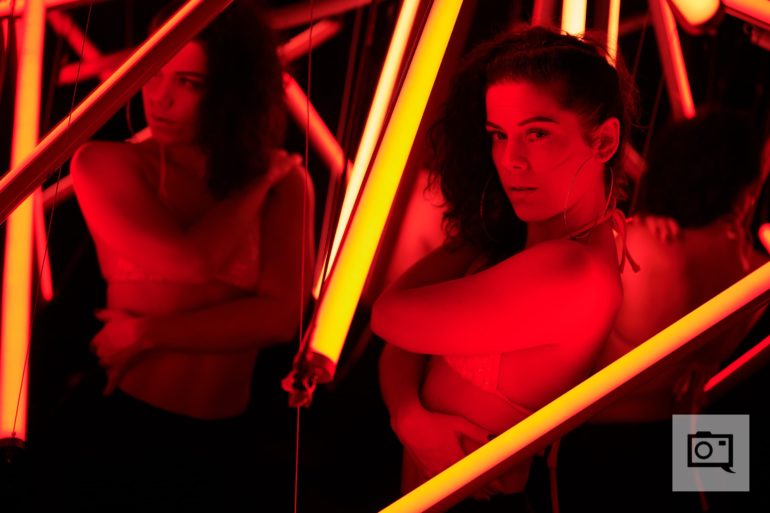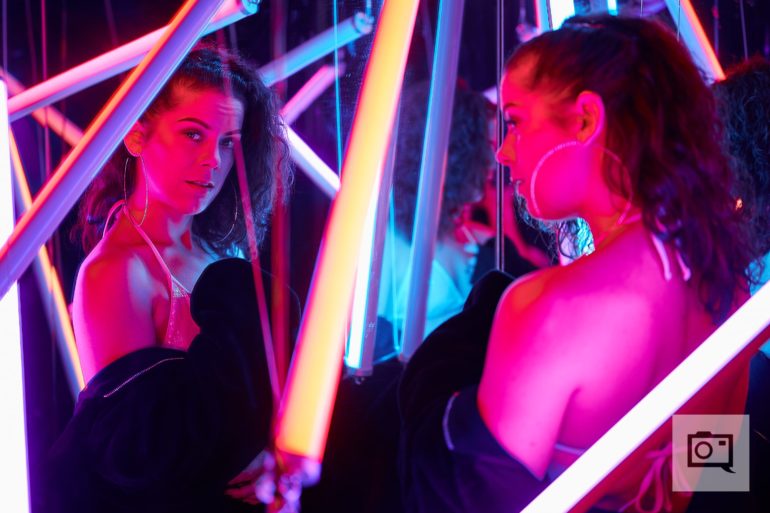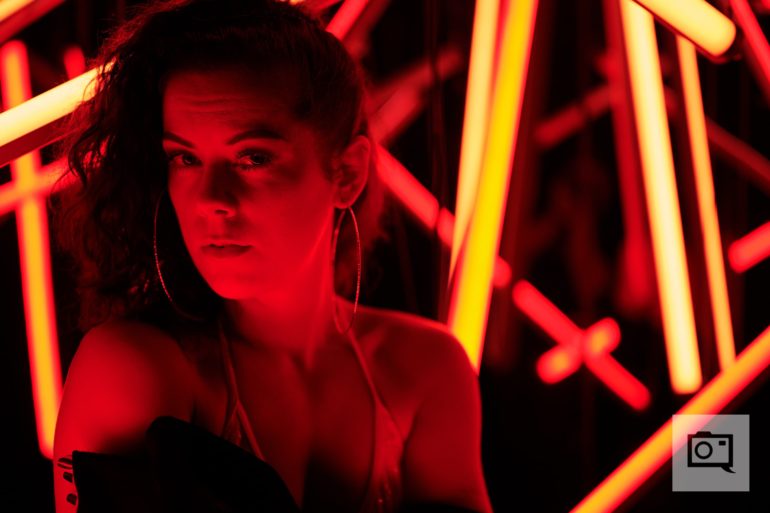The Nikon Z6 is a fairly competent entry-level interchangeable lens mirrorless camera, but we were definitely hoping for more.
When Nikon first announced the Z6, we were certainly hoping for a camera system that would blow us away. Instead, what we got was a camera system that felt half-baked at best. Coming into the mirrorless marketplace five years later than the competition, you would expect Nikon to avoid pitfalls that have plagued competing camera manufacturers, but the reality is they seem to be making a lot of the same mistakes. Nikon got quite a bit right with the Z6, and it is certainly a decent enough entry-level interchangeable lens mirrorless camera, but wow us it most definitely did not.
Editor’s note: This review is going by an experimental new standard that we’ve outlined. Each section receives its own rating and in this case, the Nikon Z6 can earn a maximum of 25 stars with each section having a maximum 5 star rating.
Pros and Cons
Pros
- Comfortable hand grip
- Excellent Electronic Viewfinder with 100% frame coverage
- EVF protrudes from the camera body, minimizing contact between your nose and the rear LCD
- Top display shows you all of your settings at a glance
- Intuitive touchscreen rear LCD
- Solid battery life when using newly designed EN-EL15b batteries
- Robust weather sealing
- Works with most existing Nikon F mount lenses using the Nikon FTZ adapter
Cons
- Single XQD card slot may be a deal breaker for photographers with certain workflows
- Colors on the rear LCD were inconsistent when compared to EVF
- Autofocus performance, while better than the Nikon Z7, still leaves much to be desired
- Certain settings were oddly organized within the menus
- There is way too much settings information displayed on the rear LCD, often getting in the way of you framing your shot
Gear Used
We tested the Nikon Z6 with the NIKKOR Z 24-70mm f4 S, NIKKOR Z 35mm f1.8 S, NIKKOR Z 50mm f1.8 S, and the Tokina 50mm f1.4 Opera adapted using the Nikon FTZ F Mount to Z Mount adapter.
Tech Specs
Tech specs for the Nikon Z 6 were taken from the Nikon’s official Z6 page.
| TYPE | |
| Type | Digital camera with support for interchangeable lenses |
| Lens Mount | Nikon Z mount |
| IMAGE SENSOR | |
| Effective Pixels (Megapixels) | 24.5 million |
| Sensor Size | 35.9 mm x 23.9 mm |
| Image Sensor Format | FX |
| Effective Pixels (Megapixels) | 24.5 million |
| Image Sensor Type | CMOS |
| Total Pixels | 25.28 million |
| Dust-Reduction System | Image Dust Off reference data (requires Capture NX-D); image sensor cleaning |
| Dust-Off Reference Photo | Yes |
| Image Area (pixels) | FX-format |
| (L) 6,048 x 4,024 | |
| (M) 4,528 x 3,016 | |
| (S) 3,024 x 2,016 | |
| DX-format | |
| (L) 3,936 x 2,624 | |
| (M) 2,944 x 1,968 | |
| (S) 1,968 x 1,312 | |
| 1:1 (24 x 24) | |
| (L) 4,016 x 4,016 | |
| (M) 3,008 x 3,008 | |
| (S) 2,000 x 2,000 | |
| 16:9 (24 x 24) | |
| (L) 6,048 x 3,400 | |
| (M) 4,528 x 2,544 | |
| (S) 3,024 x 1,696 | |
| Photographs taken during movie recording at a frame size of 3,840 x 2,160: | |
| 3,840 x 2,160 | |
| Photographs taken during movie recording at other frame sizes: 1,920 x 1,080: | |
| 1,920 x 1,080 | |
| FILE SYSTEM | |
| File Format Still Images | NEF (RAW): 12 or 14 bit (lossless compressed, compressed, or uncompressed); large, medium, and small available (medium and small images are recorded at a bit depth of 12 bits using lossless compression) |
| TIFF (RGB) | |
| JPEG: JPEG-Baseline compliant with fine (approx. 1 : 4), normal (approx. 1 : 8), or basic (approx. 1 : 16) compression; optimal quality compression available | |
| NEF (RAW) + JPEG: Single photograph recorded in both NEF (RAW) and JPEG formats | |
| Storage Media | XQD memory cards |
| Card Slot | 1 slot |
| File System | DCF 2.0 |
| Exif 2.31 | |
| PictBridge | |
| VIEWFINDER | |
| Viewfinder | 1.27-cm/0.5-in. approx. 3690k-dot (Quad VGA) OLED with color balance and auto and 11-level manual brightness controls |
| Viewfinder Frame Coverage | Approx. 100% horizontal |
| 100% vertical | |
| Viewfinder Magnification | Approx. 0.8x (50 mm lens at infinity, -1.0 m -1) |
| Viewfinder Eyepoint | 21 mm (-1.0 m-1; from center surface of viewfinder eyepiece lens) |
| Viewfinder Diopter Adjustment | -4 to +2 m−1 |
| LENS | |
| Eye Sensor | Automatically switches between monitor and viewfinder displays |
| Depth-of-Field Control | Yes |
| Lens Compatibility at a Glance*** | Z mount NIKKOR lenses |
| F mount NIKKOR lenses with mount adapter; restrictions may apply | |
| Compatible Lenses | Z mount NIKKOR lenses |
| F mount NIKKOR lenses with mount adapter; restrictions may apply | |
| SHUTTER | |
| Shutter Type | Electronically-controlled vertical-travel focal-plane mechanical shutter; electronic front-curtain shutter; electronic shutter |
| Shutter Speed | 1/8000 to 30 sec. in steps of 1/3 or 1/2 EV, bulb, time, X200 |
| Fastest Shutter Speed | 1/8000 sec. |
| Slowest Shutter Speed | 30 sec. |
| Flash Sync Speed | Up to: X=1/200 sec.; synchronizes with shutter at 1/200 sec. or slower; Auto FP High-Speed sync supported |
| Bulb Shutter Setting | Yes |
| Shutter Release Modes | Single frame |
| Low-speed continuous | |
| High-speed continuous | |
| High-speed continuous (extended) | |
| Self-timer | |
| Frame Advance Rate | Low-speed continuous: 1-5 fps |
| High-speed continuous: 5.5 fps | |
| High-speed continuous (extended): 12 fps | |
| Continuous Shooting Options | Low-speed continuous: 1-5 fps |
| High-speed continuous: 5.5 fps | |
| High-speed continuous (extended): 12 fps | |
| Top Continuous Shooting Speed at Full Resolution | 12 frames per second |
| Self-Timer | 2, 5, 10, 20 sec.; 1-9 exposures at intervals of 0.5, 1, 2, or 3 sec. |
| Timer duration electronically controlled | |
| EXPOSURE | |
| Exposure Metering System | TTL metering using camera image sensor |
| Metering Method | Matrix metering |
| Center-weighted metering: Weight of 75% given to 12 mm circle in center of frame; weighting can instead be based on average of entire frame | |
| Spot metering: Meters 4 mm circle (about 1.5% of frame) centered on selected focus point | |
| Highlight-weighted metering | |
| Metering Range | Matrix or center-weighted metering: -4 to +17 EV |
| Spot metering: -4 to +17 EV | |
| Highlight-weighted metering: -4 to +17 EV | |
| Exposure Meter Coupling | CPU |
| Exposure Modes | Auto |
| Programmed auto with flexible program (P) | |
| Shutter-priority auto (S) | |
| Aperture-priority auto (A) | |
| Manual (M) | |
| User settings (U1, U2, U3) | |
| Exposure Compensation | -5 to +5 EV in increments of 1/3 or 1/2 EV available in modes P, S, A, and M |
| Exposure Lock | Luminosity locked at detected value |
| Picture Control | Auto |
| Flat | |
| Landscape | |
| Monochrome | |
| Neutral | |
| Portrait | |
| Standard | |
| Vivid | |
| Creative Picture Controls: (Dream, Morning, Pop, Sunday, Somber, Dramatic, Silence, Bleached, Melancholic, Pure, Denim, Toy, Sepia, Blue, Red, Pink, Charcoal, Graphite, Binary, Carbon) | |
| Selected Picture Control can be modified | |
| Storage for custom Picture Controls | |
| SENSITIVITY | |
| ISO Sensitivity | ISO 100 – 51,200 in steps of 1/3 or 1/2 EV |
| Can also be set to approx. 0.3, 0.5, 0.7 or 1 EV (ISO 50 equivalent) below ISO 100 or to approx. 0.3, 0.5, 0.7, 1 or 2 EV (ISO 204,800 equivalent) above ISO 51,200; auto ISO sensitivity control available | |
| Lowest Standard ISO Sensitivity | 100 |
| Highest Standard ISO Sensitivity | 51,200 |
| Lowest Expanded ISO Sensitivity | 50 |
| Highest Expanded ISO Sensitivity | 204,800 |
| Active D-Lighting | Can be selected from: Auto |
| Extra High | |
| High | |
| Normal | |
| Low | |
| Off | |
| Active D-Lighting Bracketing | Yes |
| FOCUS/AUTOFOCUS | |
| Autofocus System | Hybrid phase-detection/contrast AF with AF assist |
| Detection Range | -2 to +19 EV (-4 to +19 EV with low-light AF) |
| Detection range (ISO 100, f/2.0 lens, 20 °C/68 °F) | |
| Lens Servo | Autofocus (AF): Single-servo AF (AF-S); continuous-servo AF (AF-C); full-time AF (AF-F; available only in movie mode); predictive focus tracking |
| Manual focus (M): Electronic rangefinder can be used | |
| Focus Point | 273 (single-point AF) |
| AF-area Mode | Pinpoint |
| Single-Point | |
| Dynamic-area AF | |
| Wide-area AF (S) | |
| Wide-area AF (L) | |
| Auto-area AF | |
| Pinpoint and Dynamic-area AF available in photo mode only | |
| Focus Lock | Focus can be locked by pressing shutter-release button halfway (single-servo AF) or by pressing center of sub-selector |
| Focus Modes | Pinpoint |
| Single-point | |
| Dynamic-area AF | |
| Wide-area AF (S) | |
| Wide-area AF (L) | |
| Auto-area AF | |
| Pinpoint and Dynamic-area AF available in photo mode only | |
| Maximum Autofocus Areas/Points | 273 |
| Vibration Reduction | 5-axis image sensor shift |
| Autofocus Fine Tune | Yes |
| FLASH | |
| Flash Bracketing | Yes |
| X-Sync Speed | 1/200th sec. |
| Top FP High Speed Sync | Up to: 1/8000 sec. |
| Flash Control | TTL: i-TTL flash control; i-TTL balanced fill-flash for digital SLR is used with matrix, center-weighted, and highlight-weighted metering, standard i-TTL fill-flash for digital SLR with spot metering |
| Flash Sync Modes | Front-curtain sync |
| Rear-curtain sync | |
| Red-eye reduction | |
| Red-eye reduction with slow sync | |
| Slow rear-curtain sync | |
| Slow sync | |
| Off | |
| Flash Compensation | -3 to +1 EV in increments of 1/3 or 1/2 EV available |
| Flash-ready Indicator | Lights when optional flash unit is fully charged; flashes as underexposure warning after flash is fired at full output |
| Accessory Shoe | ISO 518 hot-shoe with sync and data contacts and safety lock |
| Nikon Creative Lighting System (CLS) | i-TTL flash control, radio-controlled Advanced Wireless Lighting, optical Advanced Wireless Lighting, modeling illumination, FV lock, Color Information Communication, Auto FP High-Speed Sync, unified flash control |
| WHITE BALANCE | |
| White Balance | Auto (3 types) |
| Choose color temperature (2,500 K–10,000 K) | |
| Cloudy | |
| Direct sunlight | |
| Flash | |
| Fluorescent (7 types) | |
| Incandescent | |
| Natural light auto | |
| Preset manual (up to 6 values can be stored), all with fine-tuning | |
| Shade | |
| White Balance Bracketing | Exposure, flash, white balance, and ADL |
| LIVE VIEW | |
| Live View Shooting | Photography Live View Mode |
| Movie Live View Mode | |
| MOVIE | |
| Movie Metering | TTL exposure metering using main image sensor |
| Movie Maximum Recording Time | 29 minutes 59 seconds |
| Movie File Format | MOV |
| MP4 | |
| Movie Video Compression | H.264/MPEG-4 Advanced Video Coding |
| Movie Audio Recording Format | Linear PCM |
| AAC | |
| Movie | 4K UHD 3,840×2,160 / 30 fps |
| 4K UHD 3,840×2,160 / 25 fps | |
| 4K UHD 3,840×2,160 / 24 fps | |
| Full HD 1,920×1,080 / 120 fps | |
| Full HD 1,920×1,080 / 100 fps | |
| Full HD 1,920×1,080 / 60 fps | |
| Full HD 1,920×1,080 / 50 fps | |
| Full HD 1,920×1,080 / 30 fps | |
| Full HD 1,920×1,080 / 25 fps | |
| Full HD 1,920×1,080 / 24 fps | |
| Full HD 1,920×1,080 slow-mo / 30 fps x4 | |
| Full HD 1,920×1,080 slow-mo / 25 fps x4 | |
| Full HD 1,920×1,080 slow-mo / 24 fps x5 | |
| Actual frame rates for 120p, 100p, 60p, 50p, 30p, 25p, and 24p are 119.88, 100, 59.94, 50, 29.97, 25, and 23.976 fps respectively | |
| Quality selection available at all sizes except | |
| 3,840 x 2,160, 1,920 x 1,080 120p/100p, and 1,920 x 1,080 slow-mo, when quality is fixed at high | |
| Movie Audio | Built-in stereo or external microphone with attenuator option; sensitivity can be adjusted |
| Movie ISO | Auto ISO sensitivity control (ISO 100 to 51,200) |
| P, S, A: Auto ISO sensitivity control (ISO 100 to Hi 2) with selectable upper limit | |
| M: Auto ISO sensitivity control (ISO 100 to Hi 2) available with selectable upper limit; manual selection (ISO 100 to 51,200 in steps of 1/3 or 1/2 EV) with additional options available equivalent to approximately 0.3, 0.5, 0.7, 1, or 2 EV (ISO 204,800 equivalent) above ISO 51,200 | |
| Movie Active D-Lighting | Can be selected from: |
| Auto | |
| Extra high | |
| High | |
| Normal | |
| Low | |
| Off | |
| Time Code | Yes |
| Drop frame | |
| Movie Log Gamma Output | N-Log with View Assist (HDMI output only) |
| Movie e-VR | Yes |
| Movie HDMI Output | Yes, up to 10bit |
| Start/Stop supported | |
| Movie Focus Peaking | Yes |
| Movie Highlight Display (Zebras) | Yes |
| Time-Lapse Movie | Up to 4K UHD; Silent mode option |
| AF for Movie | AF Speed and AF Tracking Sensitivity can be adjusted |
| MONITOR | |
| Monitor Size | 3.2 in. diagonal |
| Monitor Resolution | 2,100,000 dots |
| Monitor Type | Tilting TFT |
| Touch-Sensitive LCD | |
| Monitor Angle of View | 170° viewing angle |
| Monitor Adjustments | Color balance |
| 11-level manual brightness controls | |
| Virtual Horizon Camera Indicator | Also visible in LiveView Modes |
| Also visible in Viewfinder | |
| PLAYBACK | |
| Playback Functions | Auto Image Rotation |
| Full-frame and Thumbnail (4, 9, or 72 images) | |
| Highlights | |
| Histogram Display | |
| Location Data Display | |
| Movie Playback | |
| Photo and/or Movie Slide Shows | |
| Photo Information | |
| Picture Rating | |
| Playback with Playback Zoom | |
| Playback Zoom Cropping | |
| In-Camera Image Editing | Distortion Control |
| D-Lighting | |
| Image Overlay | |
| NEF (raw) Processing | |
| Perspective Control | |
| Red-eye Reduction | |
| Resize | |
| Side by Side Comparison | |
| Straighten | |
| Trim | |
| Trim Movie | |
| Image Comment | Yes |
| INTERFACE | |
| Interface | USB: Type C connector (SuperSpeed USB) |
| HDMI: Type C HDMI connector | |
| Accessory terminal: Can be used with MC-DC2 and other optional accessories | |
| Audio Input: Stereo mini-pin jack (3.5 mm diameter; plug-in power supported) | |
| Audio Output: Stereo mini-pin jack (3.5 mm diameter) | |
| Wi-Fi Functionality | Standards: IEEE 802.11b/g/n/a/ac |
| Operating frequency: 2412–2472 MHz (channel 13) and 5180–5700 MHz | |
| Maximum output power (EIRP): 2.4 GHz band: 7.4 dBm 5 GHz band: 12.2 dBm | |
| Authentication: Open system, WPA2-PSK | |
| Smart Device App Connectivity | SnapBridge |
| Bluetooth | Communication protocols: Bluetooth Specification |
| Version 4.2 | |
| Operating frequency: Bluetooth: 2402–2480 MHz | |
| Bluetooth Low Energy: 2402–2480 MHz | |
| Approximately 10 m (32 ft.) without interference; range may vary with signal strength and presence or absence of obstacles | |
| GPS | Via the SnapBridge app |
| Save/Load Camera Settings | Yes |
| MENUS | |
| Total Custom Settings | 38 |
| My Menu | Yes |
| Recent Settings | Yes |
| Supported Languages | English |
| French | |
| Portuguese (Brazil) | |
| Spanish | |
| The languages available vary with the country or region in which the camera was originally purchased. | |
| Date, Time and Daylight Savings Time Settings | Yes |
| World Time Setting | Yes |
| POWER | |
| Battery / Batteries | One EN-EL15b rechargeable Li-ion battery |
| EN-EL15a/EN-EL15 can also be used, but note that fewer pictures can be taken on a single charge and that charging AC adapter can be used to charge EN-EL15b batteries only | |
| Battery Life (shots per charge) | 310 shots (CIPA) |
| Movies: Approx. 85 min. of movie recording | |
| AC Adapter | EH-7P Charging AC Adapter |
| EH-5c/EH-5b AC adapter (requires EP-5B power connector, available separately) | |
| Battery Charger | MH-25A Battery Charger |
| MISCELLANEOUS | |
| Approx. Dimensions (Width x Height x Depth) | 5.3 in. (134 mm) x 4 in. (100.5 mm) x 2.7 in. (67.5 mm) |
| Approx. Weight | 20.7 oz. (585 g) |
| camera body only | |
| Operating Environment | Temperature: 32 to 104°F (0 to 40°C) |
| Humidity: Less than 85% (no condensation) |
Ergonomics
Taken from our First Impressions article.

At first glance, the Nikon Z6 looks nearly identical to the Z7 with the only difference being the badge that you’ll find on the lower right corner of the front of the camera body.
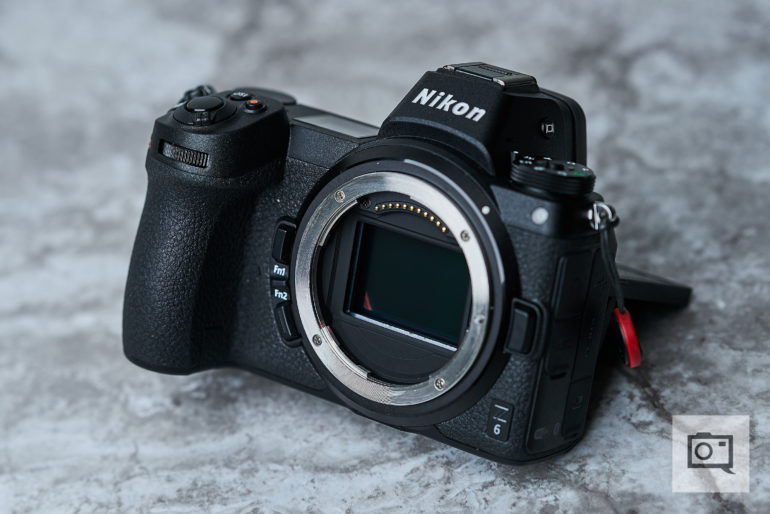
One of the first things you’ll notice about the Nikon Z6, when looking at the front of the camera body, is how massive the brand new 55mm Z mount is. To the right of the Z mount is the lens release button, and to the left are a pair of customizable function buttons. The clear dot on the upper right corner is the autofocus assist illuminator.
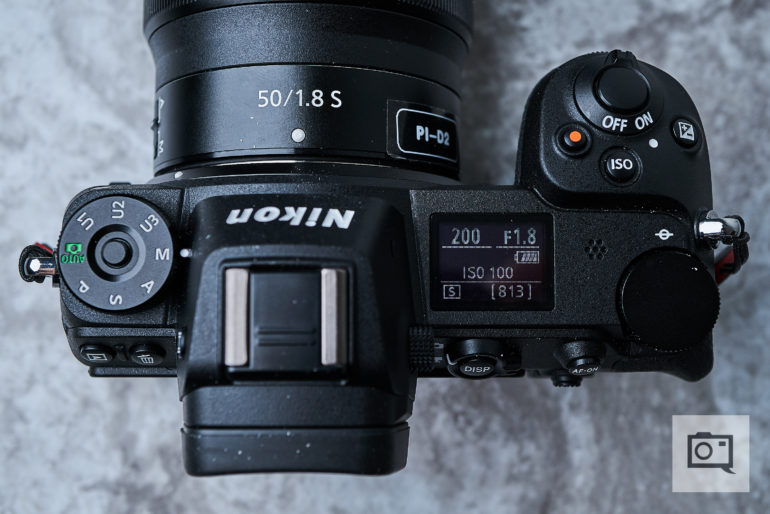
Moving towards the top of the Z6, you’ll find the mode dial on the left side of the camera body. The mode dial is automatically locked unless you depress the lock release in the center of the dial, preventing any accidental mode changes. As you move towards the right, you’ll find the hot shoe situated above the Electronic View Finder, followed by the settings display panel. Nikon calls this the Control Panel, and when the camera is on, it will display the Shutter Speed, Aperture, Battery Level, ISO, Shutter Release Mode, as well as the number of images you will be able to write onto your XQD card. Moving further right towards the top of the hand grip area, starting from the front, you will find the Power Switch, as well as the Movie Record, ISO, and Exposure Compensation buttons. The Main Command Dial can be found just above the thumb rest towards the rear of the Z6’s grip, while the Sub Command Dial is located up front towards the top of the grip, just below the power switch.
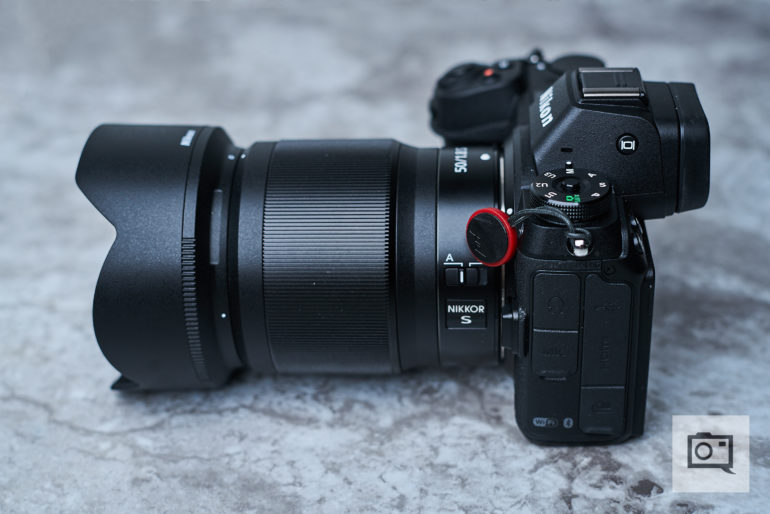
Shifting focus towards the left side of the Z6’s body are the various connector ports (covered in this image). The button on the left side of the Electronic View Finder is the Monitor Mode button, which allows you to adjust the behavior of the EVF as well as the rear LCD.
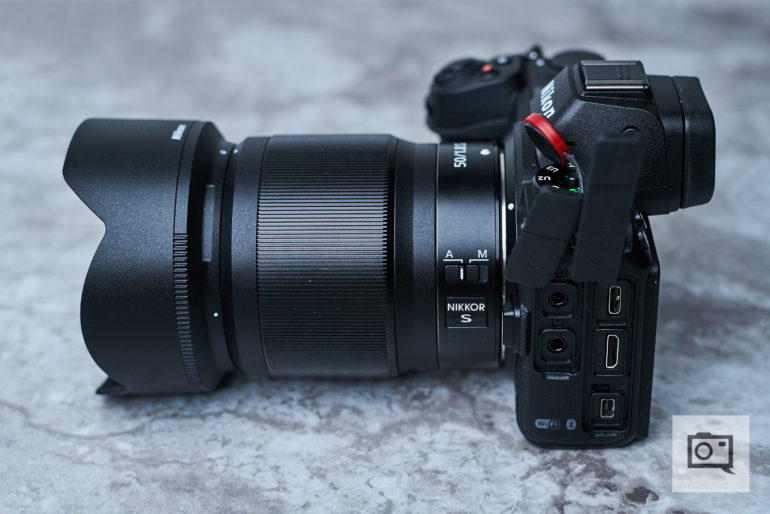
With the connector port covers removed, you’ll find the headphones and external microphone ports located towards the front, while the USB Type-C, Mini HDMI, and the Accessories connector ports can be found towards the back.
The 3.2 inch, touch enabled, tilting LCD display takes up most of the real estate towards the back of the Nikon Z6. Above the LCD, beginning from the left, you will find the Playback and Delete buttons, followed by the Electronic View Finder, as well as the toggle that switches between Photo and Movie mode along with the DISP button which allows you to adjust what is displayed on the rear LCD. A lockable Diopter Adjustment Dial can be found towards the right of the EVF. On the right side of the rear of the Z6, beginning from top to bottom, are the Autofocus-On button, the Joystick/Sub-Selector button, the i button which pulls up the quick menu, the Multi Selector directional pad along with the OK button, as well as the Zoom In/Zoom Out buttons, Menu button, and the Shutter Release Mode button.
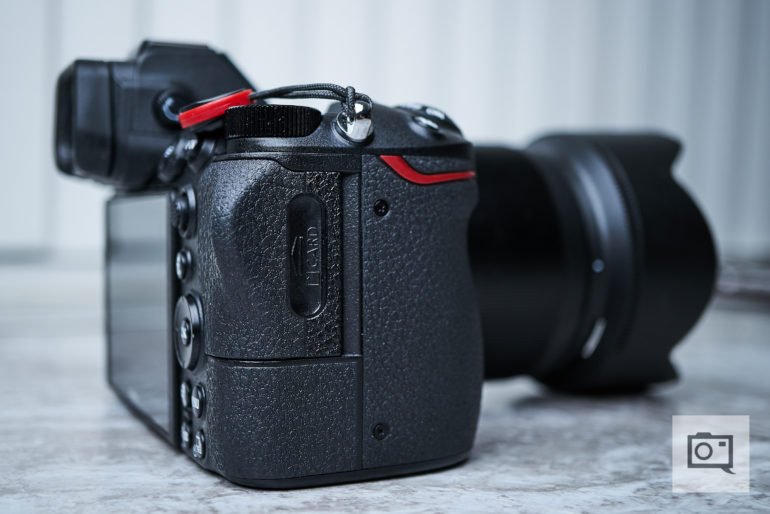
The only thing you will find on the right side of the Nikon Z6 is the hand grip, with the telltale red stripe that’s adorned many Nikon cameras before it. Towards the rear of the hand grip is where you will find the cover for the XQD card slot, upon which the thumb rest is molded.
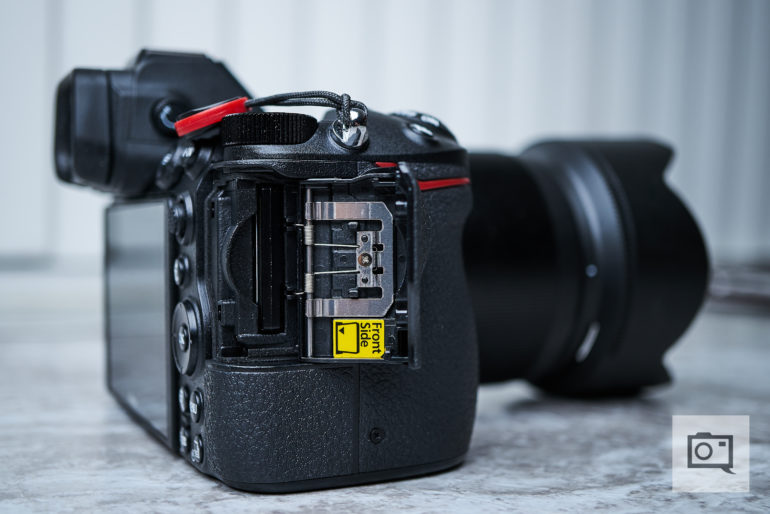
And here we are, the dreaded solitary XQD slot. It is what it is, folks. No amount of bitching and moaning will make a second card slot magically appear, so if having only a single card slot is a deal breaker, then the Nikon Z6 is certainly not the right choice for you.
In Comparison
Ergonomically, the Nikon Z6 is fairly well thought out. While I personally have never had issues with the Canon EOS R, Fujifilm X-T3, or the Sony A7III in terms of ergonomics, the Nikon Z6 (and the Z7 for that matter) definitely felt the very comfortable to hold. The Z6’s hand grip is arguably more robust that those found on the latest generation of competing Full Frame Mirrorless cameras,. Photographers with larger hands will certainly appreciate this. The protruding EVF is an excellent design choice as well, one that will surely earn praise from photographers with sizable noses like yours truly.

In terms of Ergonomics, the Nikon Z6 earns Five out of Five Stars.
Build Quality
As I had said before during our First Impressions article, the Z6 feels like an amalgamation of a Sony A7 series body and a Nikon D850 hand grip, and similar to a lot of the flagship Nikon DSLR’s that came before it, the Nikon Z6 features class leading weather sealing. During my time with the camera, we got to put this weather sealing through its paces, and the Z6 passed with flying colors, having survived numerous heavy rain storms and near arctic temperatures in New York as well as Massachusetts. The Nikon Z6 didn’t skip a beat, and I didn’t notice any significant degradation in battery life despite the low temperatures.
In Comparison
While the weather sealing on the Nikon Z6 is excellent, we have subjected the Canon EOS R, Fujifilm XT-3, and the Sony A7III to similar conditions as well and all of them have survived the abuse.

In terms of Build Quality, the Nikon Z6 earns Five out of Five Stars.
Ease of Use
Long time Nikon DSLR shooters will find the Nikon Z6 to feel instantly familiar. The grip, adorned with the signature red stripe, feels distinctively Nikon as soon as you hold the Z6 in hand. Minor design quirks aside, most photographers will be able to pick up and start shooting with the Z6 after they take a few minutes to familiarize themselves with how everything on the Z6 is laid out. Aside from a few settings that require a bit of digging, the menu system on the Z6 is laid out in a pretty straightforward manner. With the exception of the mode dial as well as the playback and delete buttons, most of the controls on the Z6 can be found on the right side of the camera along the Z6’s hand grip, allowing you to operate the camera one-handed in most instances. Being able to see and confirm all of my settings from the top settings display, which Nikon is calling the Control Panel, is something that I wish all mirrorless camera manufacturer would implement into their camera bodies. As a mostly manual shooter, I never loved the ISO button that Nikon has put on their cameras, and this hasn’t changed with the Z6. Having to hold down the ISO button before I can adjust the ISO using the Main Command Dial on the Z6 always felt like an unnecessary step. Annoyingly, if I needed to enable auto ISO, I had to hold down the ISO button yet again, except this time I needed to enable the setting using the Sub Command Dial. Just give me a dedicated ISO dial next time, Nikon.
As a bespectacled photographer that also happens to have, shall we say, a prominent nose, the protruding Electronic Viewfinder on the Nikon Z6 did a stellar job at minimizing contact between the rear display and my nose. This kept my nose from smudging the rear display too often and helped to prevent my nose from accidentally interacting with the touchscreen. The EVF on the Z6 is one of the best amongst the current crop of Full Frame Mirrorless cameras on the market and even with glasses on, I never ran into issues seeing my subject clearly. In stark contrast to the excellent EVF, however, the rear touchscreen left much to be desired. While the touchscreen itself worked fairly intuitively (with the exception of the reversed scrolling direction when reviewing images), colors on the rear LCD were way off when compared to the EVF. In addition, while the EVF displayed the settings information within the black bars above and below your frame, the litany of settings information is plastered around the sides of the rear LCD, distractingly cluttering your frame. Even at the most minimal setting, there was still too much information strewn about the edges of the frame and often got in the way of my framing my shot when using the LCD. Hopefully, Nikon will allow you to disable most of the on-screen information in a future firmware update.
In Comparison
For photographers considering switching to the Nikon Z6, you will likely find have an easier time shooting with competing cameras from Canon, Fujifilm, and Sony. However, if you’re a Nikon shooter through and through, then the Z6 will probably be right up your alley.
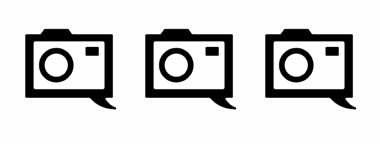
In terms of Ease of Use, the Nikon Z6 earns Three out of Five Stars.
Autofocus
The autofocus system on the Nikon Z6 was pretty responsive overall, but photographers expecting the same level of performance as the 3D Focus Tracking system found on existing Nikon DSLRs, or are accustomed to Face/Eye Detection Autofocus systems from competing camera manufacturers, will find much to be desired from the Z6’s autofocus performance. When comparing against the Nikon Z7, the Z6’s autofocus performance feels a bit more responsive, but keep in mind that the Z6 only has 273 autofocus points as opposed to the 493 found on the Z7, and the Z6 only has to resolve 24.5MP while the Z7 is dealing with a much higher resolution of 45.7MP.
Single-point AF, Wide-area AF, and Auto-area AF all worked significantly faster than Pinpoint AF, which felt slower than watching grass grow. I honestly wouldn’t bother using it unless you’re shooting with the Z6 in studio environments. Additionally, portrait photographers should note that Face Detection currently only works when the Z6 is set to Auto-area AF. Hopefully, Nikon can expand this functionality to additional AF modes in future firmware updates.
In Comparison
Autofocus is the one pain point that Nikon sorely needs to address with the Nikon Z6. The autofocus systems from competing cameras like the Canon EOS R, Fujifilm XT-3, and the Sony A7III all run circles around the Nikon Z6.
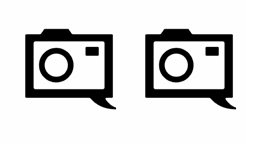
In terms of Autofocus, the Nikon Z6 earns Two out of Five Stars.
Image Quality
Design quirks and autofocus quibbles aside, one aspect that really stood out to me with the Nikon Z6 is the quality of the images its capable of producing. While the rear display certainly doesn’t do the image quality justice, most of the images looked excellent straight out of the camera, and you will be able to do a lot with your images when you import them into a raw converter.
Raw File Versatility
The Nikon Z6 is capable of capturing uncompressed raw files with a bit depth of up to 14 bits, which gives you a lot of information to work with in post. As you can see in the samples below, the Z6 captures enough information that even if you happen to have to photograph in situations with less than flattering light, there is still enough information for you to work with during post processing to help salvage the image.
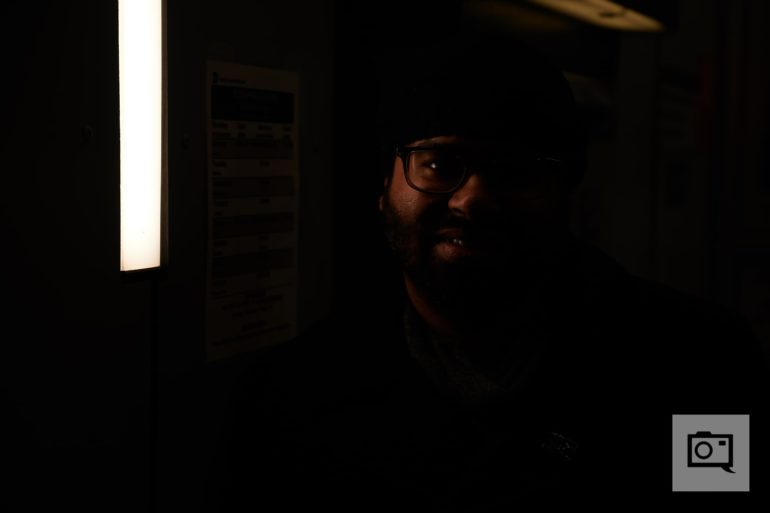

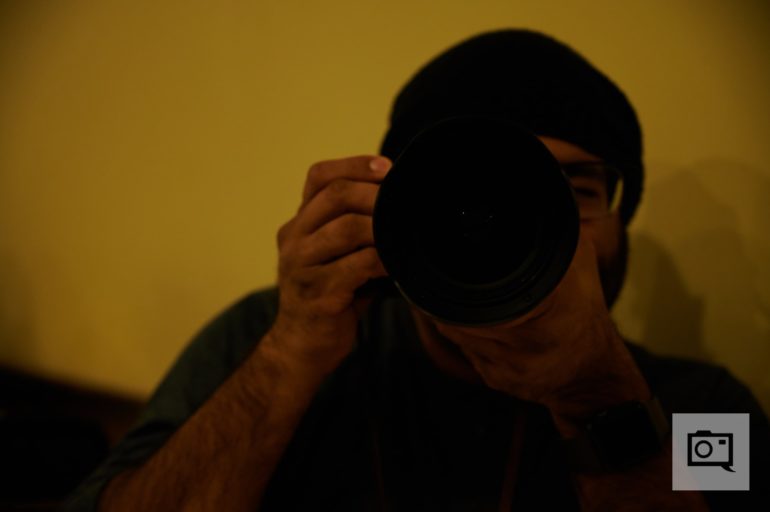
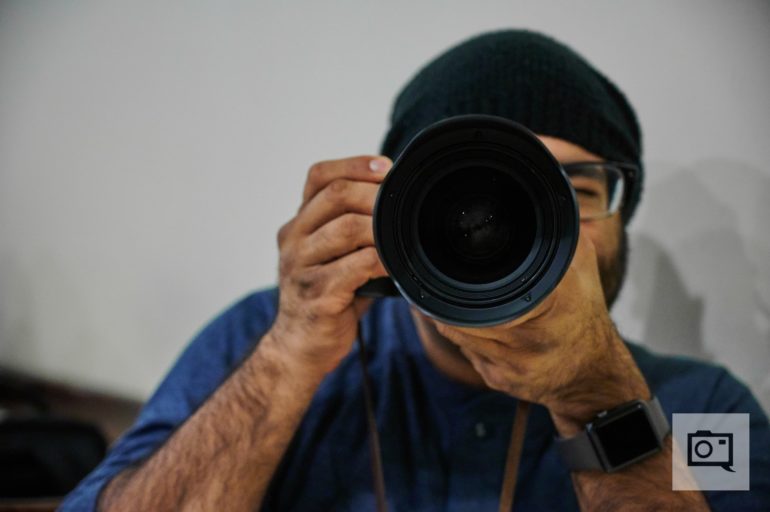




High ISO Output

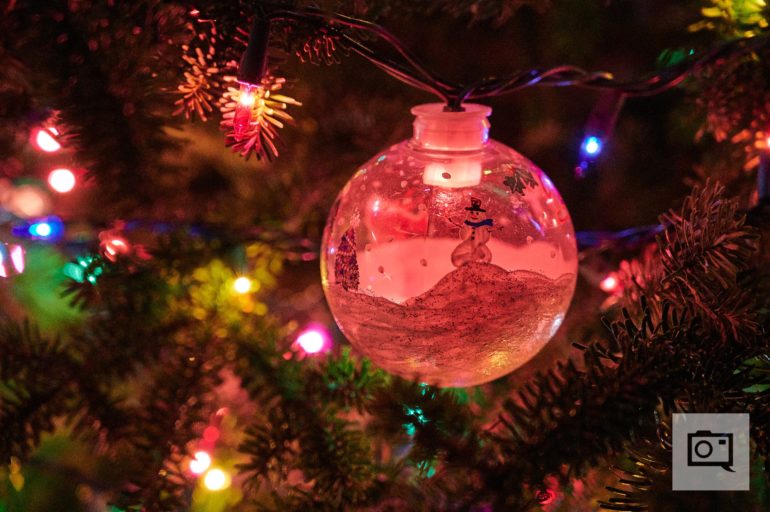

When it comes to the high ISO output on the Nikon z6, we’re very positive that the 24MP Full frame sensor at the heart of the camera will produce images that you’re going to be absolutely fine with when posting to the web. At ISO 6400, the images render pretty clean–especially when downsized for the web. This isn’t at all an issue.
We, as a standard, test high ISO output by printing on a Canon Prograf 1000 using either Canon, Legion, Red River or Epson paper depending on our needs. Surprisingly, we found the output to be only marginally cleaner than the Nikon z7’s during our printing test. Still that’s saying a whole lot because the Nikon z7 is super clean at ISO 6400.
Additional Image Samples
In Comparison
To be perfectly honest, it’s pretty hard to take a bad image with the Nikon Z6 as long as you know what you’re doing behind the camera. If you’re the type of photographer that likes to get as much done in camera as possible, then you’ll find a lot to love about the images that the Z6 is capable of producing, and there’s plenty for you to work with in the RAW files as well if you like to get creative in post. With that said, the Z6’s image quality isn’t likely to blow your socks off if you’re accustomed to the image quality of competing cameras like the Canon EOS R, Fujifilm XT-3, and the Sony A7III.

In terms of Image Quality, the Nikon Z6 earns Five out of Five Stars.
Conclusions
Likes
- Build quality
- EVF design
- Image quality
Dislikes
- Atrocious autofocus
- Single XQD slot
The Nikon Z6 is a capable, entry-level Full Frame Mirrorless camera, but given how long it has taken Nikon to truly commit to the Mirrorless market, we were hoping for so much more. Instead of wowing us out of the gate, the Z6 just felt half-baked. If you’ve amassed plenty of Nikkor F Mount glass over the years, then the Z6 is certainly worthy of consideration, but I doubt many photographers will switch systems for the Z6 because frankly, the Z6 isn’t reinventing anything despite what Nikon’s marketing will have you believe. The abysmal autofocus performance is arguably the Z6’s biggest downfall, but I’m hopeful that Nikon will take a page from Fujifilm’s book and improve the Z6 over time with regular firmware updates. The single XQD slot will undoubtedly deter a lot of potential buyers as well, as some photographers simply cannot afford the risk that comes with shooting without any sort of redundancy that dual card slots provide, so let’s hope they rectify this with the inevitable Mark II revision.

All things considered, the Nikon Z6 is a decent enough camera, albeit one that Nikon should have brought to market quite some time ago. Averaging the scores as outlined in our new experimental reviews standard, the Nikon Z6 earns Four out of Five Stars.
The Nikon Z6 is available now, and you can order one for yourself over at Amazon.


